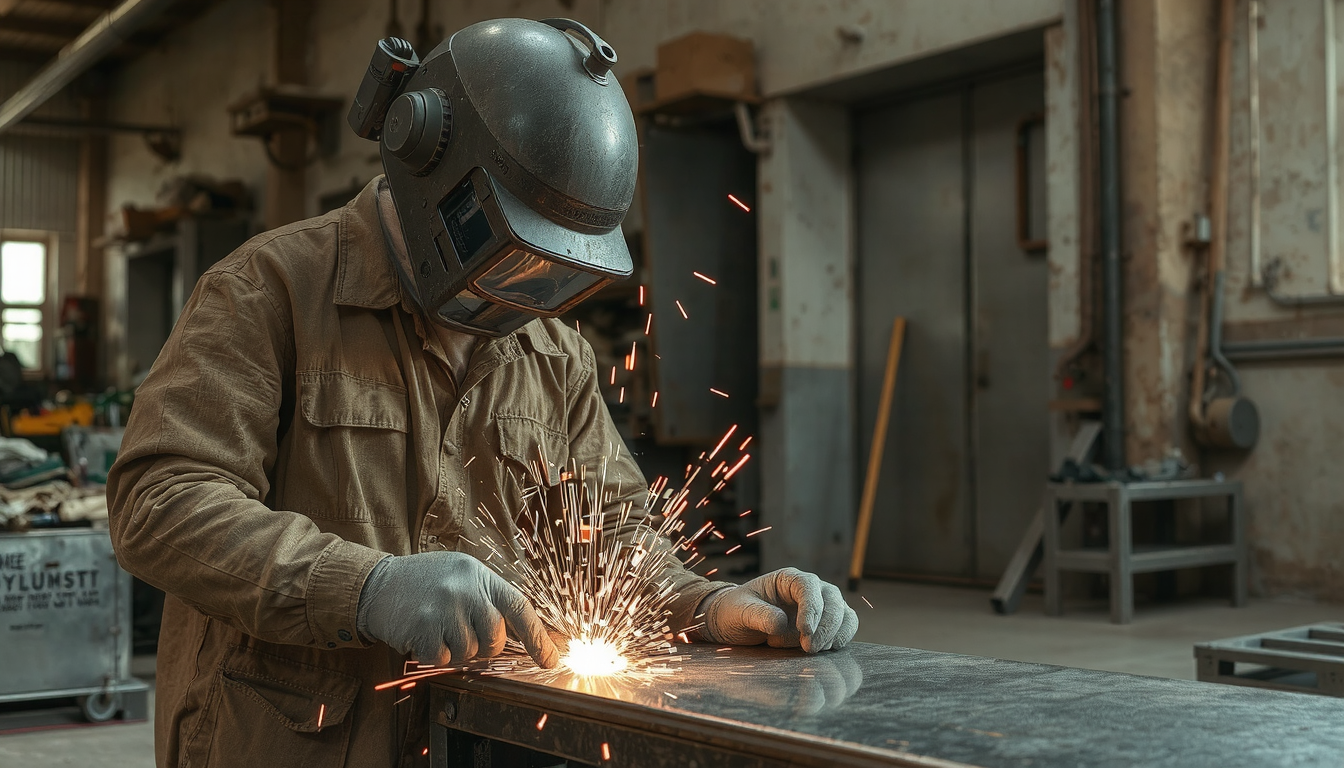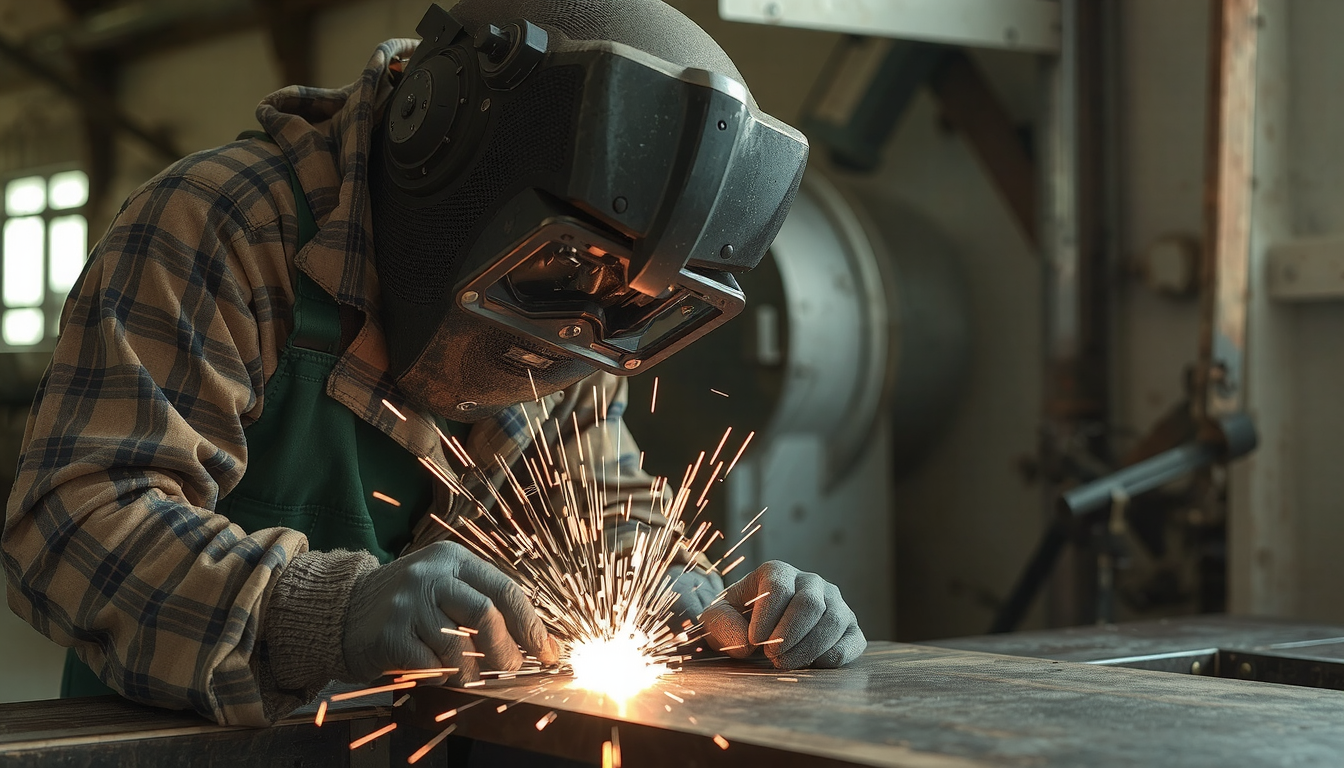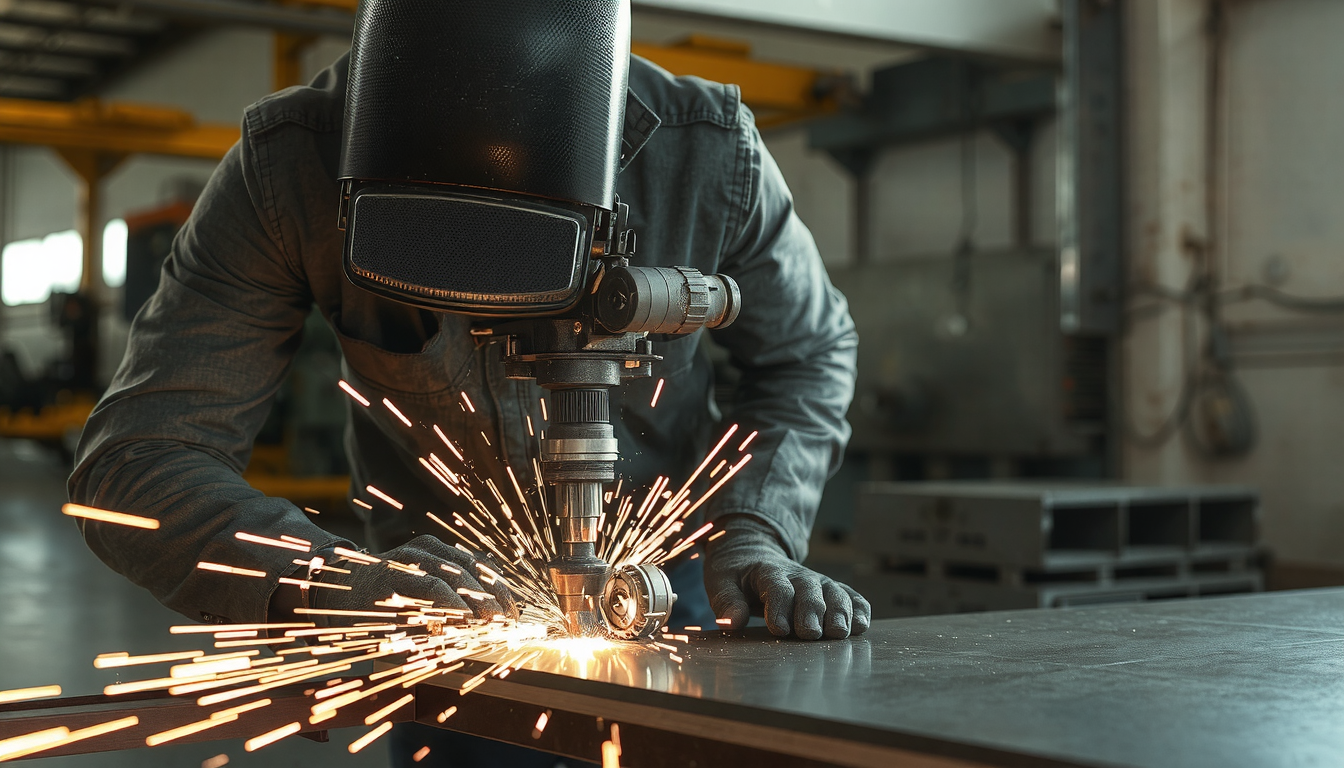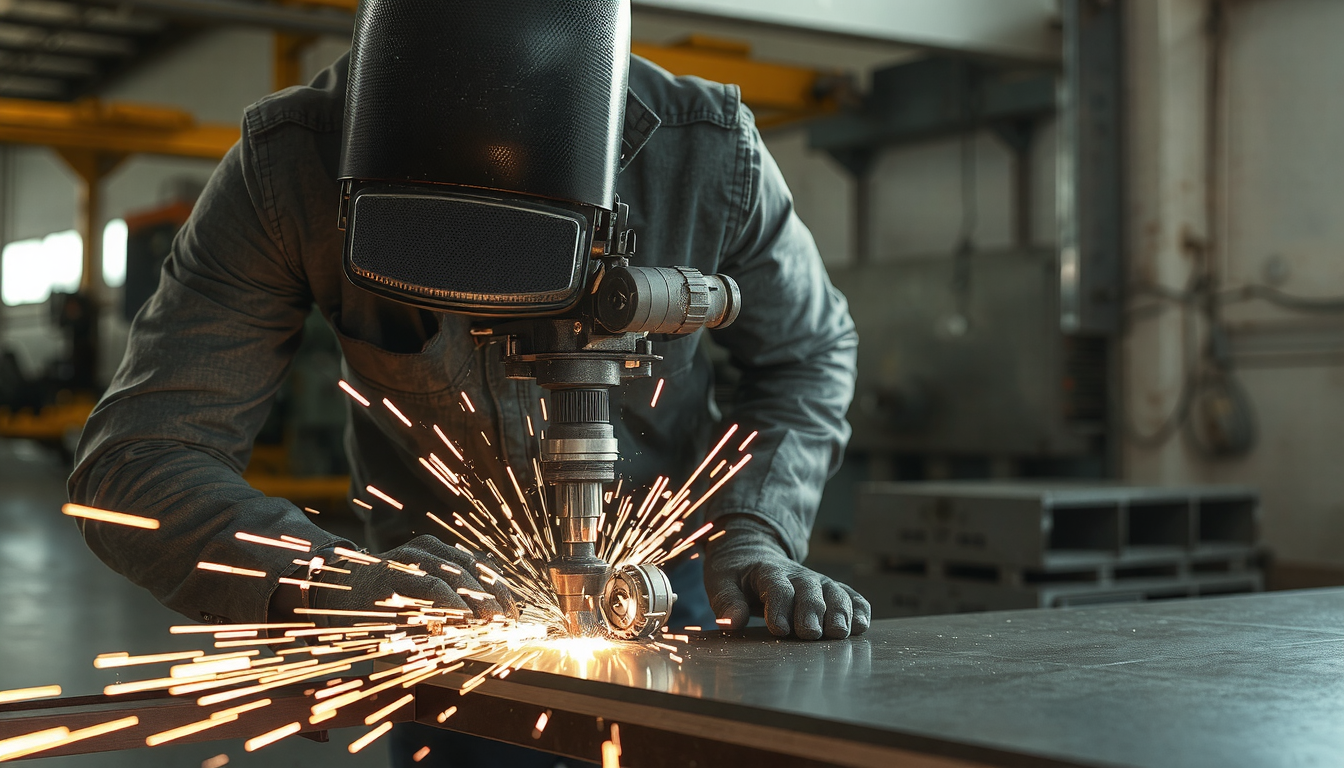Introduction: The Hidden World of Sheet Metal

What is sheet metal working? It’s a collection of techniques to manufacture objects using thin sheets of metal. The methods are mainly cutting, bending, and fastening, and the thickness of metal is usually less than 6mm (or 1/4 inch).
This is a craft that has become essential to our lives. Unbelievably, it is the very thing reshaping our world. For instance, the body for a car, the case for a kitchen microwave, and the frame for a computer are all produced via sheet metal working. It is a sub-discipline of metalworking that literally converts flat materials into functional 3D objects.
The methods discussed in this guide can be considered the entire spectrum of sheet metal working. Through this itinerary, you will move from a planar piece to an intricate final product. Tools, materials, and good design choices will be introduced only after they have proven to be necessary.
En Mekalite, we are manufacturers passionate about our work. This fits right in with our brief introduction to forcing you into the world of sheet metal.
First, What Counts as “Sheet Metal”?
Before we dive into the processes, let’s start by defining the raw material. Sheet metal is essentially metal made into thin, flat pieces. Its distinctive feature is a surface area that is very large compared to the thickness.
The sector has its predominant standards that define sheet and plate. Sheet metal is usually 0.5 mm (0.02 inches) to 6 mm (0.25 inches) thick. Those less than are typically called foil, for example, aluminum foil, while those thicker are called plate. Working with plate requires more powerful machines and is thus more costly.
Basically, this material is brought as a large, flat sheet or as a long coil that one can roll up.
The Main Sheet Metal Working Process: From Design to Part
A standard sheet metal project generally moves in a straight line from a design concept to a physical component. Grasping the ways of sheet metal working would mean knowing this workflow. Every step is interconnected, and this is the tool that verifies this. Here is an overview of the passage.
Step 1: Design & Engineering
The first step in every project is the design. Engineers utilize Computer-Aided Design (CAD) software like AutoCAD or SolidWorks to develop a digital design which they can then manipulate, creating a 2D view that includes necessary dimensions or even a 3D model of the part once it is finished.
When designing the 3D part that has to be bent, there is a key step that is creating a “flat pattern”. This is a 2D layout of the part before being folded. Imagine how a flattened cardboard box looks. This 2D layout will be calculated by the software in order for the bent part to be the correct size.

Step 2: Material Selection
Next, the right material is chosen. This decision is related to the material’s final use. If it will be used outdoors, it might need stainless steel to be rust-free. Does it need to be as light as possible? In that case, aluminum is a nice option. The selection must consider cost, weight, and strength.
Step 3: Fabrication (The “Working” Phase)
This is the phase where real “working” happens. What happens to the flat sheet is the change that occurs through three main operations: cutting, forming, and joining. These operations are the basic sheet metal processing methods. We will take an in-depth look at these processes later. This part is what defines the essence of sheet metal working.
Step 4: Finishing & Assembly
After being cut and formed, a part is not always finished. Often, it requires additional operations to get it ready. Sharp edges left from cutting are removed by deburring. Powder coating or painting applies colors and protects. Anodizing is a special coating for aluminum.
Then, different components are assembled. This consists of welding, inserting rivets, or affixing other parts to create the final product.
A Deep Look into Key Fabrication Methods
At the fabrication stage, a plain sheet of metal truly metamorphoses into a 3D form. Central to the comprehension of what is sheet metal working are the methods of cutting, forming, and joining. These are the categories where the particular processes belong.
Cutting Processes: Separating Metal
For the majority of projects, cutting is the initial stage. It creates the basic outline of the part from a larger sheet.
- Shearing: This action is similar to using a massive scissor. Two blades of a machine cut long straight lines in the metal.
- Laser Cutting: A concentrated laser beam that is very powerful is utilized to either melt or burn the metal. This method is very accurate and produces smooth edges.
- Plasma Cutting: This technique is achieved by using a stream of hot plasma which melts and blows away the metal. Its major advantage includes speed; it’s especially quick when cutting thick sheets.
- Waterjet Cutting: This is a process wherein high-pressure water streams, often blended with abrasives, are used to sheer metals. Unlike cutting processes that use heat, it does not warp the metal.
- Punching/Blanking: A punch and a die are used by a press to make shapes or holes in the metal. This is especially quick if identical parts are fabricated.
Forming Processes: Shaping Metal Without Removal
Sheet metal forming is the method of bending the metal or stretching it into a specific 3D form without cutting the material away.

- Doblando: This is the most common forming process. A machine called a press brake fastens the metal and employs a punch and die to create exact angles and V-shapes.
- Stamping: A presser forces a uniquely shaped tool (a die) into the metal. This creates simple structural features such as ribs and complex geometries like those found in a car door panel.
- Rolling: The metal is rolling through rollers to obtain shapes such as arcs or even complete cylinders.
- Deep Drawing: This process develops a sheet into a cup-shaped item, such as a soda can or a sink.
Joining Processes: Putting Parts Together
A product, many times, is achieved by using multiple different sheet metal parts, which are then joined to each other.
- Welding: This process utilizes heat by melting edges of two parts and subsequently combine them into one strong component.
- Riveting: A rivet is a small metal pin passed through holes in two parts and is deformed to create the correct joint.
- Hardware Insertion: Special fasteners like nuts, studs, and standoffs are pressed into the metal sheet. This gives strong attachment points for screws and other components.
In some instances, sheet metal components must be assembled with other precision parts. For these complex assemblies, specialized methods like Servicios de torneado CNC are often used to create the required precision components.
How to Choose the Right Sheet Metal Process: A Practical Comparison
Knowing what is sheet metal working is to also know the reasons for choosing a particular process. No cutting process is “best.” This depends on various factors. It is a combination of the right cost, speed, and the quality of the work, all of which lead toward the end of the metal.
For instance, laser cutting is an avenue that offers very high accuracy but may be slower than plasma cutting. On the other hand, punching has the benefit of very high speed in manufacture but the need for high expenses for the custom tooling required. This makes it less practical for a one-off prototype.
Findings concerning the most common cutting processes are presented in the table below, which is supposed to help you make an informed decision about which cutting process is the best to apply.
| Proceso | Precisión | Edge Quality | Material Thickness | Velocidad | Coste relativo |
|---|---|---|---|---|---|
| Corte por láser | Alta | Excelente | Thin to Medium | Medio | Medio |
| Plasma Cutting | Medio | Bien | Medium to Thick | Rápido | Bajo |
| Corte por chorro de agua | Alta | Excelente | Any Thickness | Lento | Alta |
| Perforación | Alta | Bien | Thin to Medium | Very Fast | Low (High Volume) |
These differences are essential for the success of cost-effective and efficient manufacturing. An able partner can lead you to the right process that aligns with the requirements of your project.
Designing for Success: An Intro to DFM for Sheet Metal
A fantastic product is born out of a stellar design. In manufacturing, we abide by a principle that is called Design for Manufacturability (DFM). This is the approach where we make parts that are easy and cheap to produce. Applying DFM to sheet metal working can save a lot of time and money.
Why DFM Matters

Clever design decisions can significantly decrease costs. They cut waste, speed up manufacturing time, and give better quality to the final product. A component that is hard to make will always be more expensive. Sometimes a single change on a drawing can simplify the whole process.
Key DFM Rules to Remember
In sheet metal, we follow some key DFM rules and here are a few that we practice regularly.
- Bend Radii: Each bend has an inner curve, this is the curve or radius which should be as close as possible to the thickness of material.
- Hole Placement: It should be maintained a sufficient distance from the bend. Otherwise, if it gets too close, the hole may stretch and, in turn, distort it when it is formed.
- K-Factor: This is a value used in CAD software that is specific. It helps accurately calculate the flat pattern. It accounts for how the metal stretches during bending. This assures correctness in the final part dimensions.
From our experience, a common design flaw is placing a hole too close to a bend. After bending, this could cause the hole to go from a perfect circle to an unusable oval shape. We employ a DFM rule that requires the edge of a hole to be no less than 2.5 times the thickness of the metal away from the bend.
The Building Blocks: Common Materials in Sheet Metal Working
The variety of what is sheet metal working has the physical explanations of the multitude of metals involved. Every metal has a different set of properties, therefore, it can be used in different ways.
Here is a quick guide to some of the most commonly used metals.
| Material | Propiedades clave | Aplicaciones comunes |
|---|---|---|
| Acero al carbono | Strong, low cost, but can rust | Brackets, machine frames, enclosures |
| Acero inoxidable | Resists rust, strong, clean look | Kitchen appliances, medical tools, food equipment |
| Aluminio | Lightweight, resists rust, good conductor | Aerospace parts, electronics cases, signs |
| Copper/Brass | Very conductive, resists rust, decorative | Electrical contacts, plumbing fittings, decorative items |
The material selection is at the forefront of the project. It decides how the part will perform, look, and cost.
Conclusion: The Lasting Importance of Sheet Metal Working
To a broader perspective, sheet metal working is a widely-used and absolutely needed concept. It is the art of the logic of transfiguring plain sheets of metal into intricate and useful 3D shapes. Without the very foundation of this pursuit, a lot of the industries that exist today would not have developed.
In this piece, we covered the core ideas. They began with the design and material selection and proceeded to the methods employed. Cutting, bending, and assembling were the main steps in the process. Also, the selection of the right method was based on the precision required, costs, and materials used. Smart design and material selection are equally important as the manufacturing methods themselves.
Understanding what is sheet metal working represents the first step in taking a product from the stage of design to the reality. If you have a design at hand or if you need specialized consultation for your new project, browse through our professional fabricación de chapa metálica services to catch a glimpse of our capacities and know-how.
Frequently Asked Questions (FAQ) about Sheet Metal Working
What is the difference between sheet metal working and machining?
Sheet metal working is the process of bending and cutting thin sheets, it is focused on keeping the material’s thickness constant, while machining, like CNC milling, means removing a large amount of material from a solid block of material to create a specific shape. Thus, one manipulates a sheet while the other one carves a block.
What is a “press brake”?
A press brake is one of the main machine tools for bending sheet metal. To operate effectively, it clamps a piece of metal between a tooling system comprised of a punch and an opposing element known as the die. The punch is forced into the die by the press, making the metal bend at a particular angle.
Is sheet metal working expensive?
The cost can vary a lot. For making thousands of identical parts, a process like stamping is very cheap per part.
What is the thickest metal that can be used in sheet metal working?
While there is no single rule, the term “sheet metal” usually applies to metal up to 6mm (about 1/4 inch) thick. Material thicker than this is called “plate.” Plate work requires much more powerful equipment and different methods to shape.
What industries rely most on sheet metal working?
Many industries depend on it. Key examples include automotive for car bodies and frames. Aerospace uses it for plane parts. HVAC uses it for air ducts. Construction uses it for roofing and siding. Consumer electronics uses it for device casings and internal chassis. It’s also vital for home appliances like refrigerators and washing machines.

